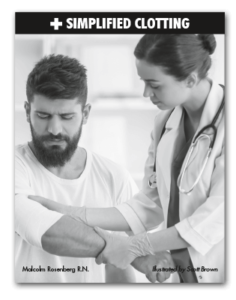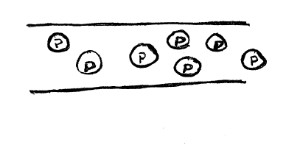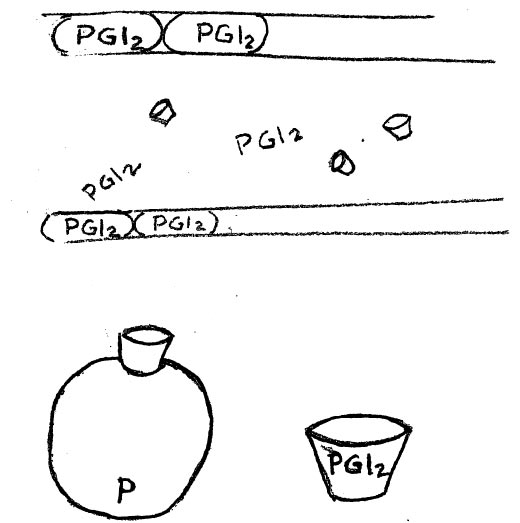 Just like a vital busy highway, which develops cracks and potholes, our vasculature has its own highway department repair crew, the clotting mechanism.
Just like a vital busy highway, which develops cracks and potholes, our vasculature has its own highway department repair crew, the clotting mechanism.
by Malcolm Rosenberg, RN
$7.95
You already have a good idea of the things blood does. You know red blood cells deliver oxygen and remove carbon dioxide. And white blood cells fight infection. To reach all 6 trillion cells, blood vessels have to cover a lot of distance. Our vasculature, the highway of our blood is 60,000 miles long. If a giant sink hole suddenly appeared on the interstate all the cars would fall into it. Similarly, if a break occurs, the clotting mechanism plugs the hole to avert blood loss. Like the highway department the clotting system can sometimes do shoddy work, like thrombocytopenia or hemophilia.
Or unlike the highway department, the clotting system can sometimes do too good a job like disseminated intravascular coagulation or myocardial infarction.This book explains these processes in simple pictures. By the time you are done you will have a grasp of clotting and the medications to treat problems.
After an injury the body needs to stop the loss of blood. It does this by forming a clot at the site. That’s obvious. It gets tricky because the body must know when to be liquid and when and where to turn solid. That is what this book is about.
This explanation of the clotting process will be broken down into three phases, (1) platelet aggregation, (2) clot formation and (3) clot lyseing.
Excerpt from Platelets Chapter
There are three steps in the clotting process, platelet aggregation, blood coagulation and clot dissolution. The first step (#1) in the process is platelet aggregation. Platelets are the smallest particle in the blood. There are about 1.5 trillion platelets in our body. More precisely: 1,497,458,253,769. The number of platelets per milliliter is in a complete blood count, a CBC. About 200 billion platletses are created each day. They live about nine days. 300,000 platelets in each milliliter is a normal count. You may have noticed platelet counts below 150,000 in the CBC. You may have hesitated to give an injection because of low platelet counts.
Normally platelets flow through the vasculature (all 60,000 miles of it) totally oblivious to each other or the lining of the vessels (smooth endothelial cells).
That is because platelets are normally repelled from each other and from the walls of the blood vessels. There are a few obvious reasons for this. One is the negative charge of the platelets. So the negatively charged bodies avoid each other.

The other factor is smooth walls of the blood vessels. Nothing can stick to them. That is like the idea of Teflon pans. I don’t know which came first But it was a very good idea.
Excerpt from Vasocontriction Chapter
Enough Platelet Aggregation Already!
Like I said: The body must know when the blood should be liquid and when and where to be solid. If that process described above did not have some limits, we would turn into one big platelet aggregate every time we nicked our finger. What stops that runaway clot? Who you gonna call? Prostacyclin.
Prostacyclin (PGL) inhibits the release of aggregating agents, serotonin and thromboxane A2 from the aggregating platelets. You can visualize prostacyclin as a cork in opening of the ruptured platelet. The healthy epithelial cells surrounding the injury secrete PGL.



